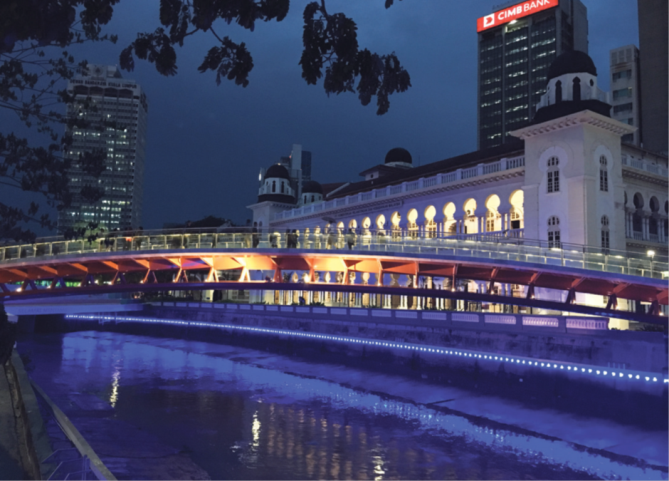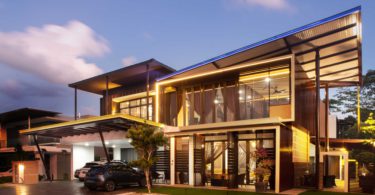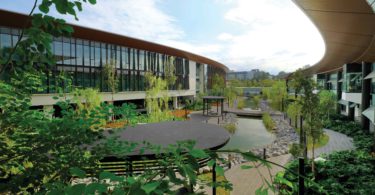River of Life (ROL) is one of the Malaysian government’s Economic Transformation Projects, which combines high-impact initiatives to elevate the country to developed nation status.
The ROL is set to bring the community ‘back’ to the river through connecting, transforming and invigorating the river context into a vibrant waterfront, embracing the city’s rich historical, cultural and heritage values, and re-connecting it to the surrounding urban fabric.
The project is expected to spur economic investments into the immediate surrounding areas, acting as a catalyst for long-term development in the region. Upon full completion in 2020, the ROL is expected to deliver affordable housing for more than 35,000 new residents, one million square meters of commercial space, more than 27,000 new employment opportunities, raise public transportation usage within the master plan area from 15 to 60 per cent, and reduce traffic demand by 15 per cent.
The RM4.4-billion project encompasses a 10.7-kilometer spread of riverfront through Kuala Lumpur’s historic core, including the confluence of the Gombak and Klang Rivers, with a total area of 781 hectares and 63 hectares of water bodies.
The project is divided into three main stages of work—river cleaning, river beautification and river economics—to be carried out over four phases and 11 precincts.
MASTER PLANNING
Following a planning competition, AECOM was appointed to deliver the river master planning and beautification component of the project. It has also provided a strategic framework for urban and landscape design guidelines to ensure a common baseline for designs and cohesive developments in the Klang Valley region.
During the early stages of the ROL project, the team studied successful water-facing public areas around the world, such as Cheonggyecheon in South Korea, Kunshan Civic Plaza in China, Clarke Quay in Singapore, and Chicago Waterfront, USA, and learned how they became successful in attracting the communities there to embrace the locations, not just as tourist destinations, but as part of their urban fabric. These lessons were then localised and incorporated into the master plan, having taken into account the local culture, history, aspirations and environment.
“Beyond the essential cleaning for both the Gombak and Klang rivers, placemaking and connectivity are crucial elements that AECOM has planned and designed to bind the development together,” Feisal Noor, vice president of AECOM, Malaysia, tells Construction+.
“This can be seen in the now completed Precinct 7 area, where through rigorous efforts in design and planning for the historical epicentre of Kuala Lumpur, namely Masjid Jamek and Bangunan Sultan Abdul Samad, the river confluence area is now given a complete new life that the brings back the iconic value and identity of the city through strategic moves to integrate, connect and rediscover the public realm. Spaces once restricted are now open for public enjoyment and experience, and this is one of many steps taken to reclaim the rivers back into Kuala Lumpur.”
PHASE ONE
Precinct 7 is part of phase one of the project— handed over on 20 December 2017—which involved historic sites, such as Dataran Merdeka, Masjid Jamek and Central market, located at the confluence of the two rivers.
“The first phase of the project was able to achieve five ‘big moves’ that transformed the intersection of the Klang and Gombak Rivers, which is the historical heart of the city,” says Feisal.
The first was the removal of an old dilapidated building that obstructed Masjid Jamek’s entrance and the creation of an open space called the Batik Plaza. A grand staircase located at the river confluence, which was hidden for decades, has been reconstructed to its former historical glory.
Secondly, a pedestrian bridge was constructed to connect Merdeka Square to Masjid Jamek—a move that increases the walkability of the area, encouraging higher visitor traffic and providing faster connection to the Masjid Jamek LRT station. A flood wall and extended boardwalk were added, while a heritage balustrade was preserved.
The third was the engagement of historical buildings in the area, such as the Bangunan Sultan Abdul Samad, by opening them up to the public. The parameter fence was removed for greater accessibility and to reveal the beauty of the heritage building, while car parks have been replaced with dedicated bicycle paths and pedestrian sidewalks.
The project has also connected Merdeka Square with tourist destinations—such as Petaling Street and Central Market—and opened up Lebuh Pasar Besar, creating a vantage viewing point facing the mosque and the river confluence.
Finally, better path connections and a proper viewing platform reveals Masjid Jamek as an icon in the heart of the city and encourages locals and tourists alike to learn more about its history and significance in the growth of early Kuala Lumpur.
CHALLENGES
The project was not without its share of challenges. For example, there was great difficulty in retrieving the data required for planning, such as information pertaining to old buildings, land titles and utilities and services running underneath the city—these were largely uncoordinated or unavailable and required many surveys and coordinated efforts with authorities to piece together.
As the project takes place in a living and working environment, there were several logistical and site constraints to manage. The project implementation team also had to deal with continuous unearthing of buried unchartered things, including infrastructure pipes and cables, as well as historical artefacts and archaeological items.
Given the impact of the ROL, there were also many stakeholder and public engagement sessions to inform and involve the public during the design and planning process, which often required intensive solution finding.
SIGNIFICANCE
“ROL is important for Kuala Lumpur on many levels, as it highlights the birth context of the city and raises awareness of the importance of the Gombak and Klang rivers, as well as their delicate eco system,” Feisal notes.
The immediate impact can already be seen in Precinct 7, where pride and ownership have returned to the immediate urban context, raising both social standing and unlocking economic value to a once overlooked downtown area. Tourism has risen, and with further work, pedestrian connectivity will spur growth and development in the vicinity.
The various urban components, through hard scape, street furniture, signage and lighting works, have been unified, while still being distinctive to stress on the importance of immediate context through cultural and arts installations.
PROJECT DATA
Project Name: River of Life (Phase 1)
Location: Precinct 7, Kuala Lumpur
Completion Date: December 2017
Expected Final Completion: 2020
Total Site Area: 7.8 million Square metres
River Length: 10.7 kilometres
Client: Kuala Lumpur City Hall
Architecture Firm: Linear Vista Sdn Bhd
Landscape Architecture Firm: AECOM
Civil & Structural Engineer: AECOM
Mechanical & Electrical Engineer: AECOM
Quantity Surveyor: KPK Quantity Surveyors
Lighting Consultant: Light Cibles Pte Ltd
Main Contractor: Ekoriver Construction Sdn Bhd
Images: AECOM Team

 Hong Kong
Hong Kong Singapore
Singapore Indonesia
Indonesia Tiếng Việt
Tiếng Việt ประเทศไทย
ประเทศไทย
















